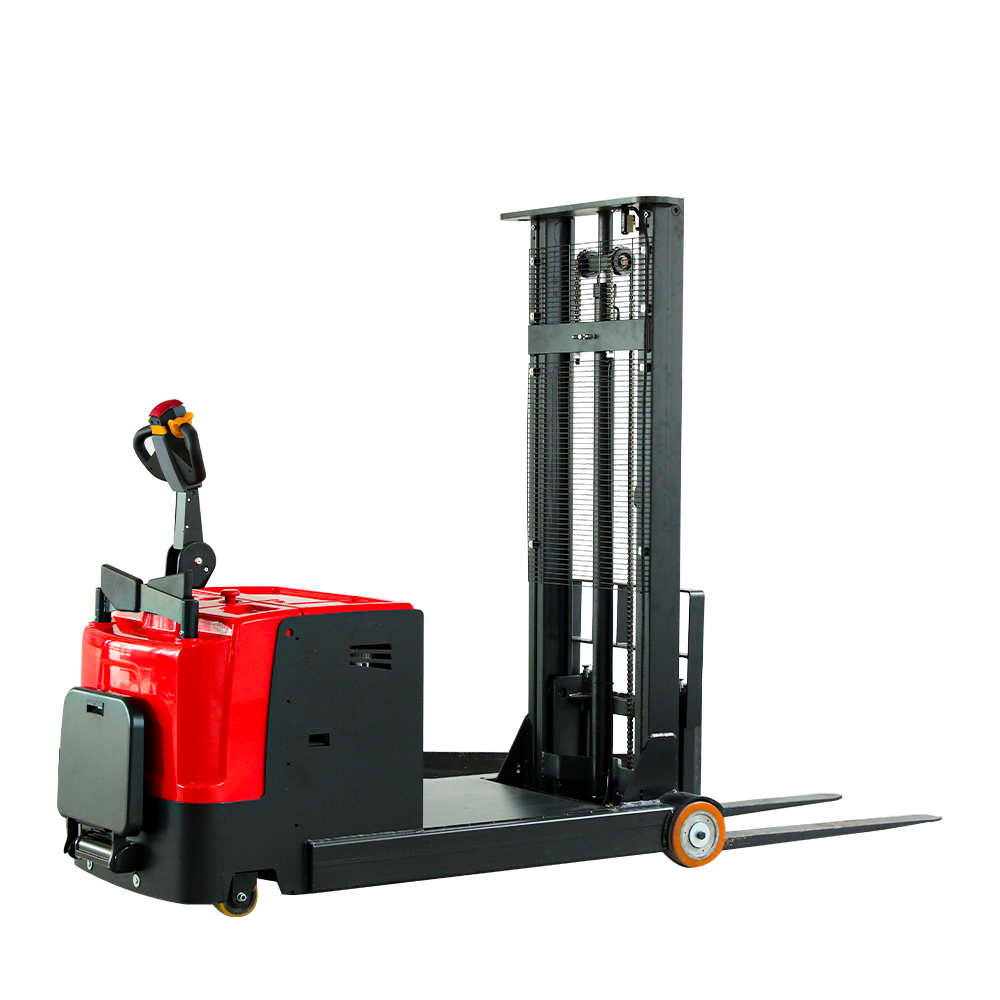The electric version of a counterbalanced stacker achieves more precise control compared to some other power sources, such as internal combustion engines (IC), due to its inherent characteristics and the way its electric motor operates. Here's how the electric version achieves this level of precision:
1. Instant Torque and Speed Control:
- Electric motors can provide instant torque and speed control. When an operator commands a specific movement, such as lifting or lowering the load or moving forward and backward, the electric motor responds rapidly and precisely. This quick response allows for fine adjustments and precise positioning of the stacker.
2. Variable Frequency Drive (VFD) Technology:
- Many electric stackers are equipped with Variable Frequency Drives (VFDs) that enable precise control of the motor's speed and acceleration. Operators can smoothly modulate the speed, which is especially valuable when maneuvering in tight spaces or when handling delicate or fragile loads.
3. Regenerative Braking:
- Electric stackers often incorporate regenerative braking systems. When the operator releases the accelerator or lowers the load, the electric motor can reverse its operation and act as a generator. It converts kinetic energy into electrical energy, which can be fed back into the battery or power system. This regenerative braking not only saves energy but also allows for controlled and gradual deceleration, contributing to precise control.
4. Digital Control Systems:
- Electric stackers typically feature advanced digital control systems that can precisely manage motor performance and feedback from various sensors. These control systems continuously monitor and adjust parameters to maintain consistent and accurate movement.
5. Quiet Operation:
- Electric motors are inherently quieter than IC engines. This quieter operation allows operators to focus better and make precise movements without being distracted by excessive noise.

6. Reduced Vibrations:
- Electric stackers tend to have reduced vibrations compared to IC engine stackers. This reduction in vibrations contributes to operator comfort and allows for steadier load handling.
7. Ease of Multi-Axis Control:
- Electric stackers often feature joystick or fingertip controls that enable operators to manage multiple functions simultaneously with ease. These controls are designed for intuitive and precise operation in various directions and planes.
8. Low Inertia:
- Electric motors have lower inertia compared to some other power sources, making it easier to start, stop, and change direction quickly. This low inertia contributes to the stacker's precise and responsive control.
The electric version of a counterbalanced stacker achieves more precise control through the use of advanced electric motor technology, Variable Frequency Drives (VFDs), regenerative braking, digital control systems, and operator-friendly controls. These features enable operators to handle loads with precision, make fine adjustments, and navigate through tight spaces more accurately, ultimately enhancing the stacker's overall performance and usability.


 русский
русский Français
Français Español
Español







